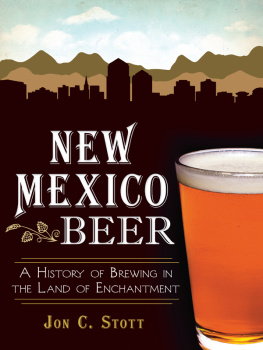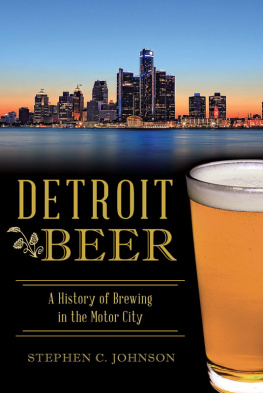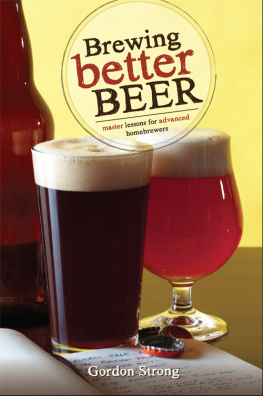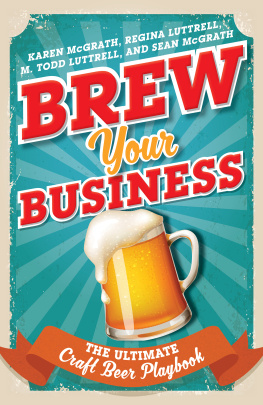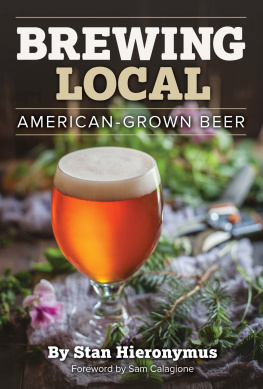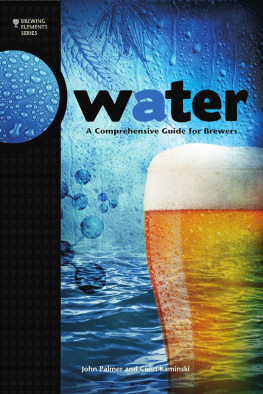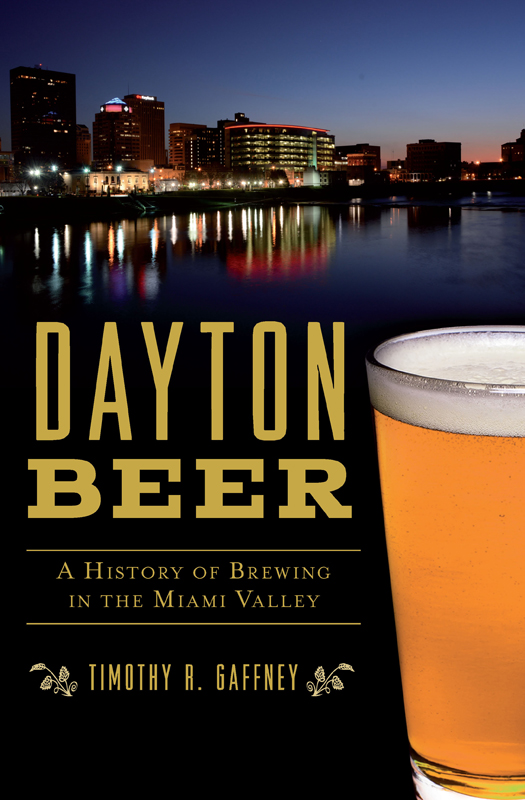


Published by American Palate
A Division of The History Press
Charleston, SC
www.historypress.com
Copyright 2019 by Timothy R. Gaffney All rights reserved
First published 2019
Manufactured in the United States
ISBN 978.1.43966.744.6
Library of Congress Control Number: 2019937036
Print edition ISBN 978.1.46713.892.5
Notice: The information in this book is true and complete to the best of our knowledge. It is offered without guarantee on the part of the author or The History Press. The author and The History Press disclaim all liability in connection with the use of this book.
All rights reserved. No part of this book may be reproduced or transmitted in any form whatsoever without prior written permission from the publisher except in the case of brief quotations embodied in critical articles and reviews.
CONTENTS
PREFACE
Every book is a journey of discovery for its author, and so this one was for me. I learned the beer of our forefathers, like local craft beer now, reflected the life experiences of its brewers and the history of the region where it was madenot only human history but also the natural history that shaped the land and the local climate. I learned the story of beer in the Miami Valley is entwined with stories about the birth of America, the displacement of native people, the struggles of immigrants, the building of canals and railroads and even the terraforming work of glaciers. I learned much of the history of our early brewers and their breweries is all but lost, scattered among thousands of records and a few precious collections preserved by archivists, librarians and historical society volunteersbless them all. As I pored over census sheets, land records, birth, marriage and death certificates, passport applications, Civil War registries and obituaries, some brewers seemed to come to life, transfiguring familiar streets with their breweries and homes, while others remained elusive spirits. Still, I learned how some of them lived and, in a few cases, how they died.
Citations are important, but it would have been impractical to cite every record I consulted. Besides the usual history books, newspaper microfilms and city directories, I tapped ancestry databases to review thousands of census, marriage, birth, death, cemetery and land records.
Misspellings of immigrants names are common in historical records, and sometimes they changed their names over time. Records of their places of origin were often vague, conflicting or illegible. Also, digitized indexes of genealogical databases sometimes misinterpreted spellings in the original, handwritten records. I used the names and spellings the individuals themselves or their descendants seemed to prefer, but I noted alternate spellings in cases where it wasnt conclusive.
ACKNOWLEDGEMENTS
I thought writing a book about the history of beer brewing in the Miami Valley would be as easy, and almost as quick, as homebrewing a batch of ale. I was wrong. I owe a huge debt of gratitude to my wife, Jean, for carrying on without complaint while I spent endless hours at my computer, in archives and, of course, in brewpubs. I thank my acquisitions editor, John Rodrigue, and Senior Editor Ryan Finn. Many others provided information and pictures or helped me dig up records. Thanks to Jann Kuehn Adams, Jamie Arthur, Steve Barnhart, Adam Becker, Tanya Brock, Brad Bergefurd, Nate Cornett and Lisa Wolters, Mark Fisher, Natalie Fritz (and Clark County Historical Society), Brenda Gibson (and Miami Conservancy District), Janine Kohlhorst Gulich, Karla Hollencamp, Nancy Horlacher (and Dayton Metro Library), Angie Hoschouer (and Historic Woodland Cemetery and Arboretum), Mindy Kannianen, Justin Kohnen, Vickie Lockwood, Kevin Loftis, the volunteers of Minster Historical Society, Nick Moeller, Rick Ordeman (and Miami Valley chapter, Brewery Collectibles Club of America), Jeff Puterbaugh, Jim Sachs, Dr. David Schmidt, Shelby County Historical Society, Kyle Spears (and Dayton History), Linda Trent (and Troy Historical Society), Jack Waite, Sharon Watson (and Piqua Public Library) and Mackensie Wittmer (and Oakwood Historical Society).
INTRODUCTION
A visitor to the Miami Valley in the 1850s would have found a variety of breweries, some of wood and some of brick, their rooms filled with oak barrels and plank tables. On a cold day, hearths with blazing logs would have banished the chill.
A typical brewing works would have been a gravity-fed system mounted on its own brick superstructure along one wall. A flight of rough steps would have led up to a large kettle over a wood firea course the brewers apprentices would have known all too well from hauling up countless armloads of firewood and buckets of water. The brewing process would have gone like this: From the kettle, heated water drained into a lower kettle, called a mash tun, to soak floor-malted grains the brewer had roasted in an open hearth and stone ground in a hand-cranked grinder. From the mash tun, the resulting wort drained into another open kettle, to be boiled and flavored with hops and spices, and then circulated through a coiled pipe in a barrel filled with ice-cold water before finally arriving, unfiltered, in a fermenting barrel. After a week, the young beer would be drained into another barrel to rest for two weeks, aging and clarifying.
In Dayton, such a brewery stands today. Dayton History, a nonprofit historical society, joined the craft beer movement in 2014 in its own unique way: by building an authentic, 1850s-style brewery based on local research and using traditional materials and methods. The brick-andtimber building is set in Carillon Historical Park, a sixty-five-acre, open-air museum of restored and replica buildings where authentically costumed staff and volunteers bring the regions history to life through interpretation and programs. At Carillon Brewing, visitors can watch brewers in period costume make beer while they dine on German-themed food. For a fee, one can be brewer for a day, suiting up in period clothes and working with the head brewer to learn the historical process of beer making. Carillon Brewing calls it History by the Pint.

Carillon Brewing Company at Carillon Historical Park. Authors collection.
As of this writing, the head brewer is Kyle Spears, a historian who dabbled in homebrewing during his college years. In 2018, four years after joining Dayton History, Spears said he enjoyed telling visitors about Daytons brewing heritage as much as practicing the craft.
This melding of craft beer with local history is a distinctive feature of the craft beer movement sweeping the Miami Valley as of this writing. In numerous interviews and conversations for this book, craft brewers in the Dayton region described their businesses as part of the larger movement toward locally grown and manufactured goods. They tap history to accentuate the local nature of their goods in a variety of ways, from repurposing old buildings to branding their products with names from Daytons past. Beer lovers can down a pint named for Xenias Hollencamp family of brewers or Daytons once popular Superba brand or drink any number of beers named for famous Dayton inventors and inventions. I think people want to be connected to their community, Spears said.
Next page

